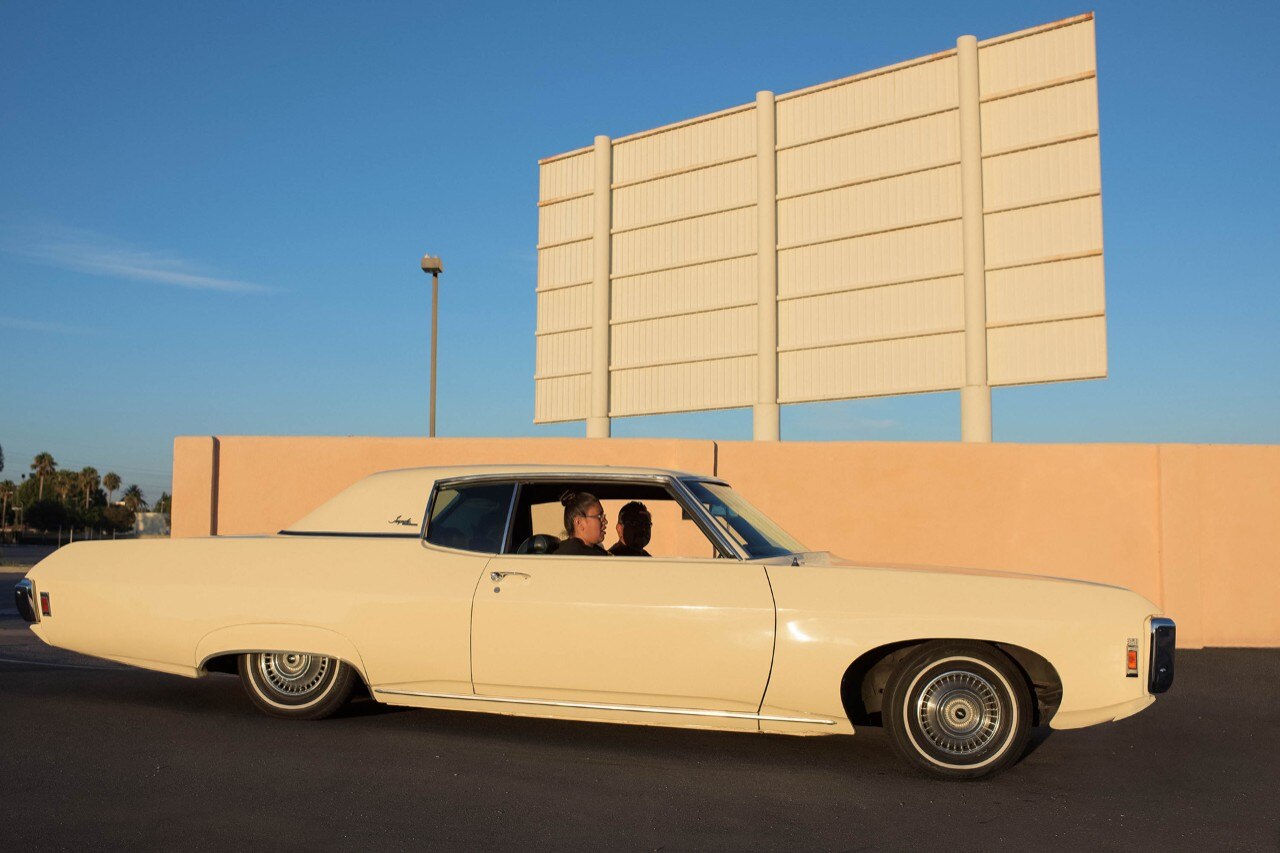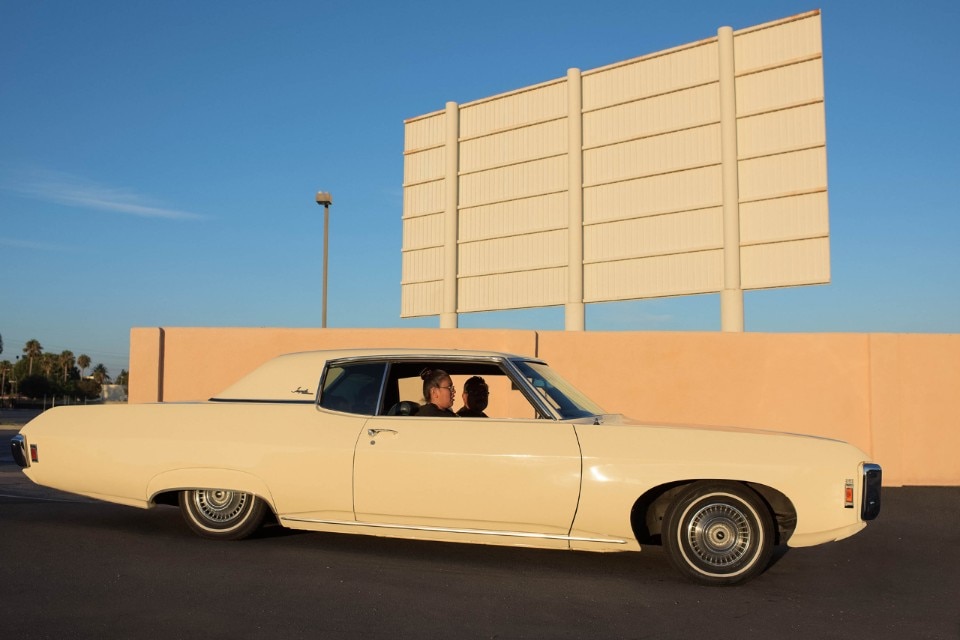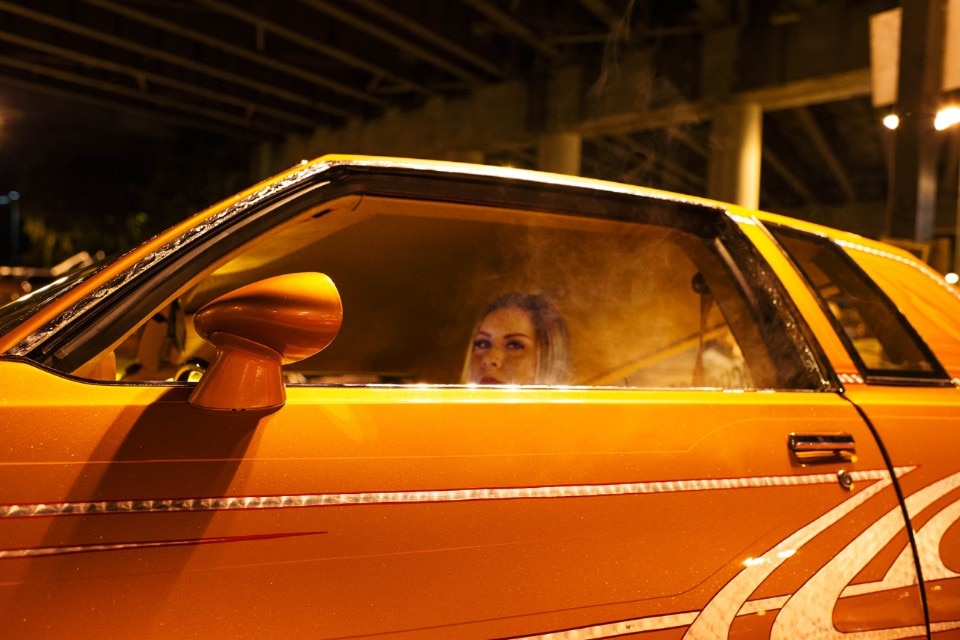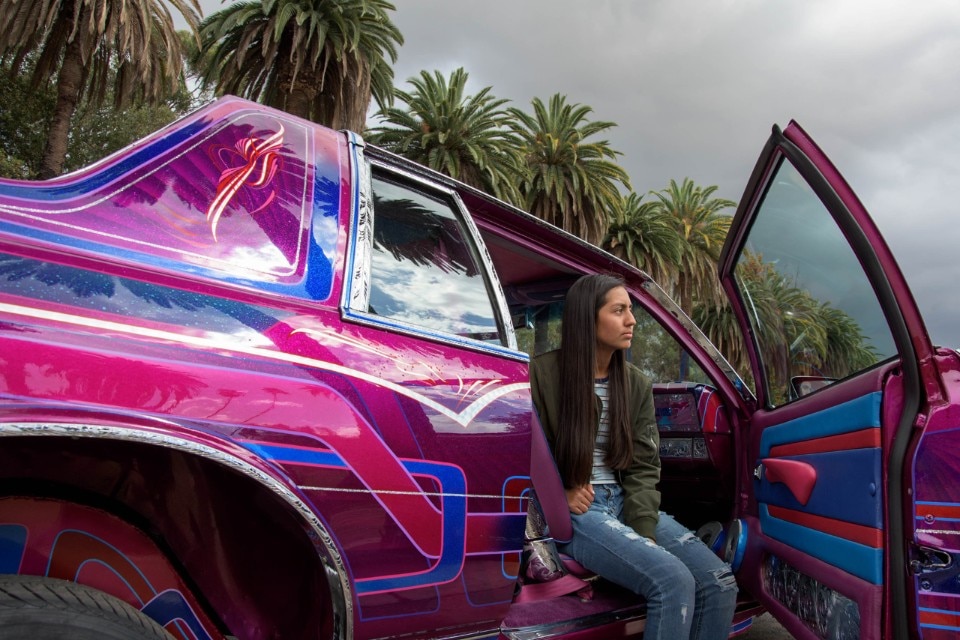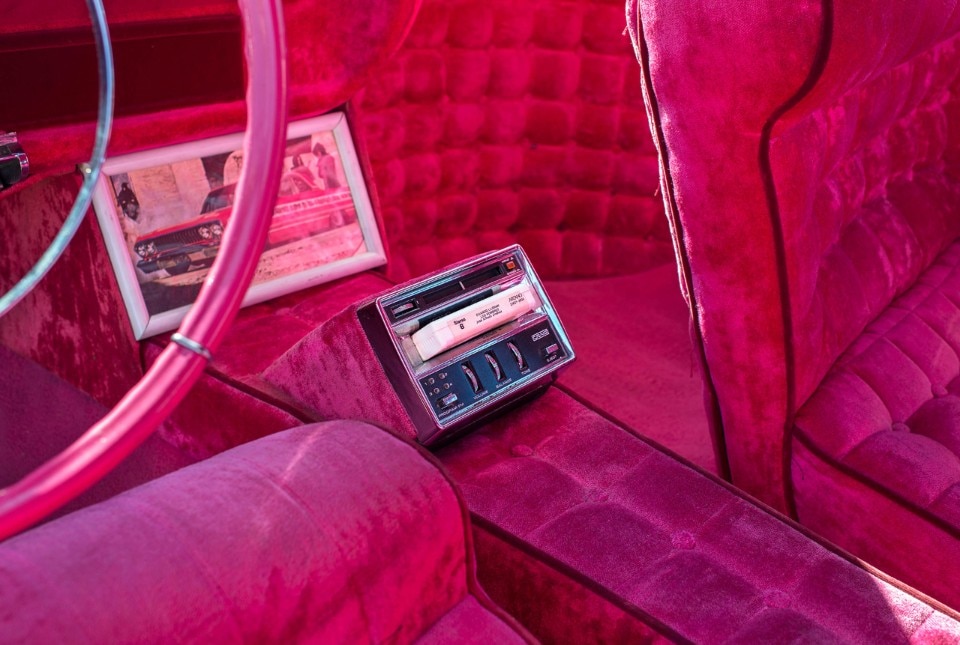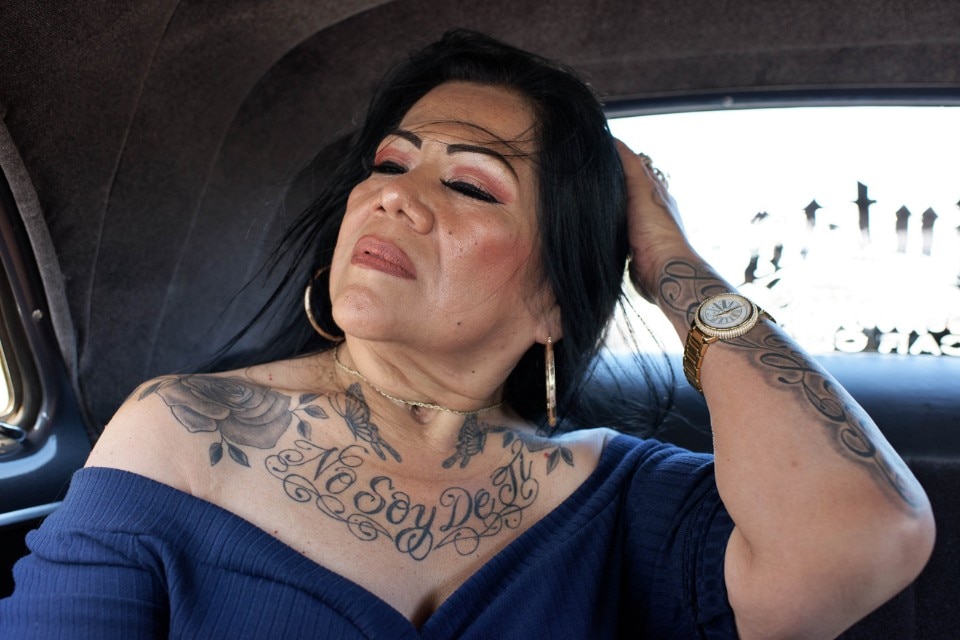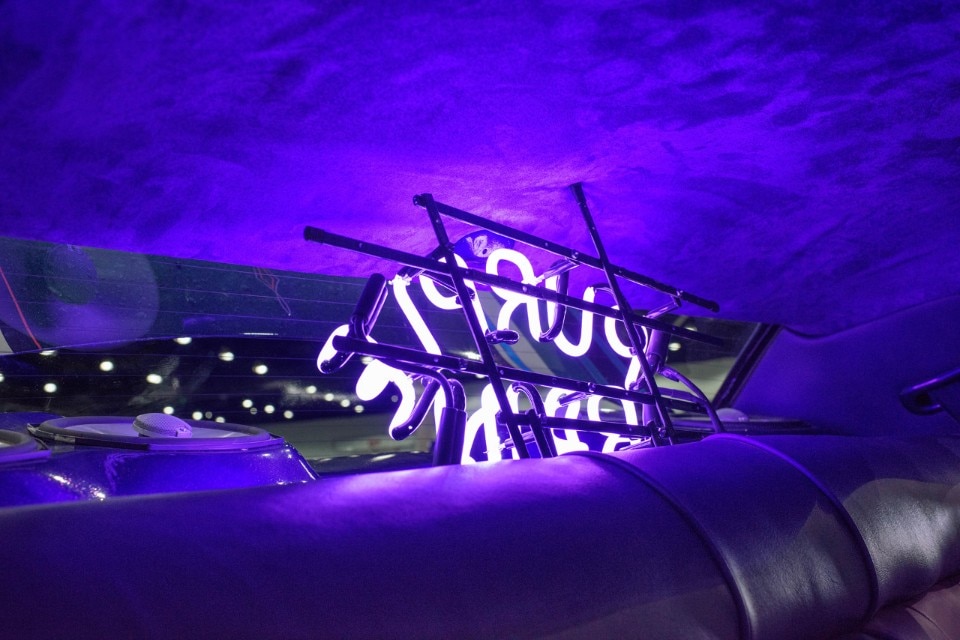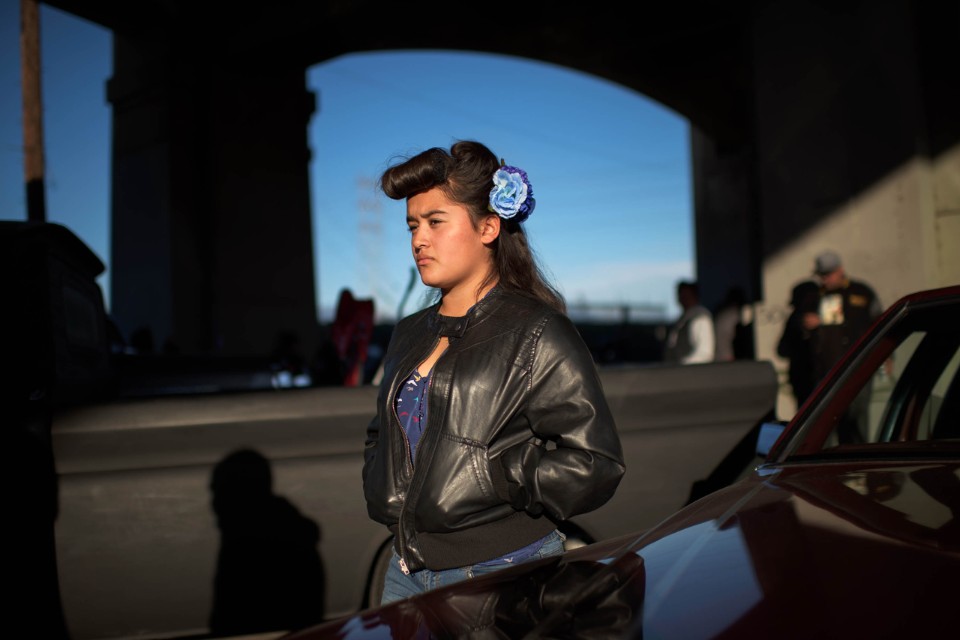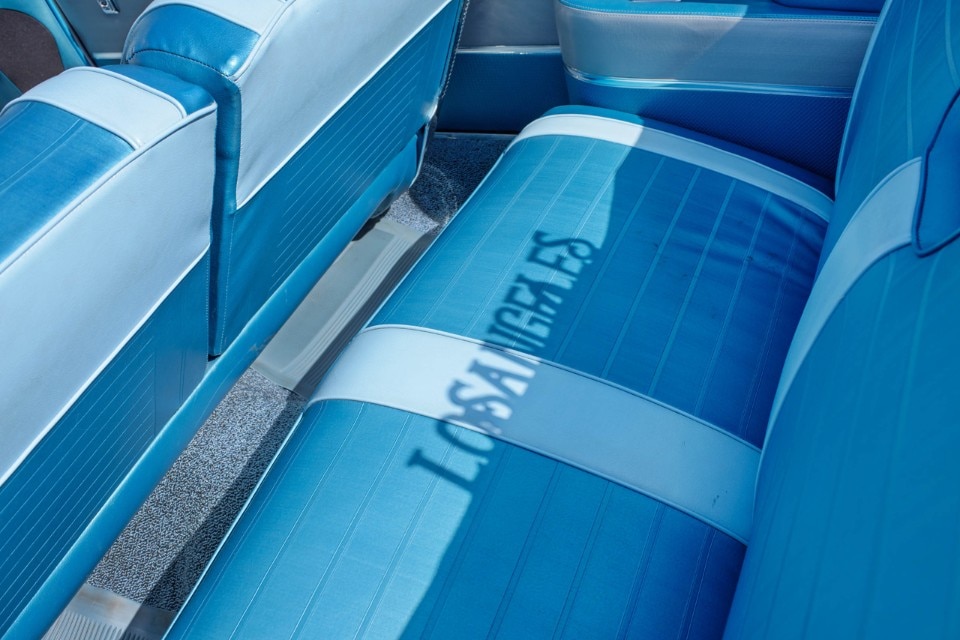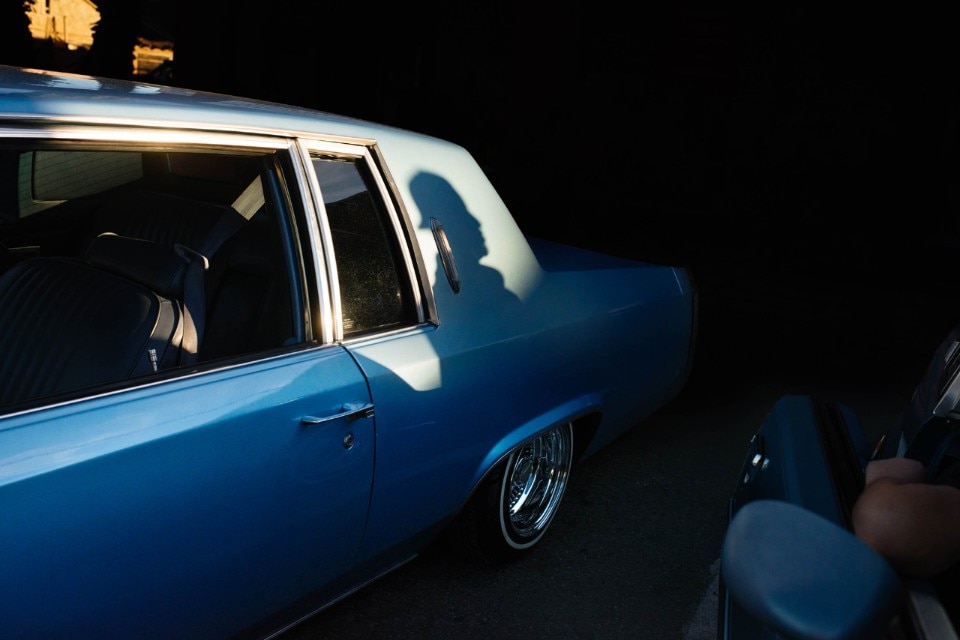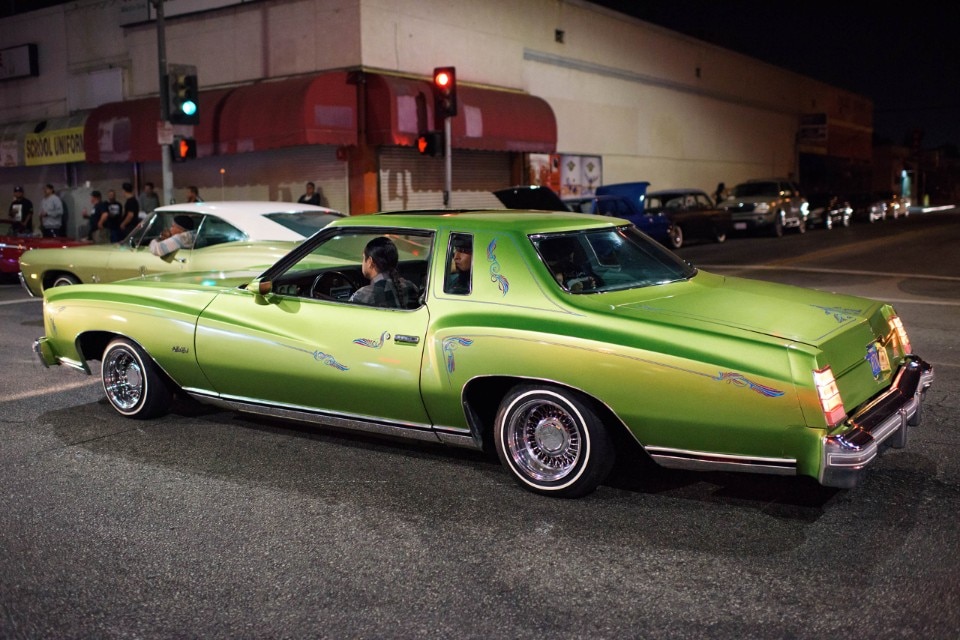The motto with which the lowrider community originally presented itself on the streets of post–war Los Angeles was “Low and Slow”, and it literally expressed in two words the key to a culture that gently went against the grain. Lowering the trim on their cars, and decorating the bodies with clever, colorful designs, was one of the ways in which Mexican Americans from the barrios that made up the urban fabric of the city’s east side expressed their identity. As a form of self–determination, and therefore of social and political affirmation, on the one hand they re–proposed, in a new popular form, almost folkloric motifs and values, inherited from their land of origin, and on the other hand they embraced, borrowing and changing them, those of a country in which it was sometimes difficult to express the right to feel truly at home.
In its seventy years of history this community has evolved, thanks in part to the technical innovations introduced in— circumventing overly restrictive laws— and by the automobile industry, and today has tens of thousands of followers in Los Angeles alone, not to mention those in the rest of the States and new followers all over the world (first and foremost, of course, Japan).
In her first book, Cruise Night (Damiani, 2021), Kristin Bedford has collected five years of work carried out in close contact with the Lowrider community in Los Angeles: a slow and passionate work that adopts the same point of view as the subjects portrayed, and that has led its author to become in some way part of this culture.
What was the path (personal or professional) that led you to lowriders?
Underlying all of my projects is an interest in social justice and how communities express their civil rights in a society that often marginalizes them. My path to lowriding came from an interest in how the customization of a car is about having a voice – politically, culturally and creatively. While lowriding is a worldwide phenomenon, for Mexican Americans in Los Angeles, it has a unique significance. For over seventy years, this community has been expressing their identity through this distinct car culture. I wanted to photograph and understand how transforming a car was integral to being seen and heard.
Since it’s a community based on such a specific interest, you'd imagine that lowriders on the one hand would snub those who don't belong to it or don't know much about it, and on the other hand would be eager to show off in front of the lens. Your photos, however, have both an intimate and anthropological slant: how did you balance the need to understand this culture and gain trust, and the need to express yourself as an author who wants to make her voice heard?
I spend most of my time listening and getting to know the lowriders. My foremost priority is personally connecting with the lowriders. I keep my camera out so people know why I am there, but I spend a fraction of the time making photographs. It was through kinship, trust and respect that the lowrider community embraced me.
When I think about photographing a community of people, I treat them as I would like to be treated. I only use available light, no strobes or flashes. All of the photos are unstaged, with no posing or created environments. I use a fixed lens, which means the distance I appear to be from the subject is the actual distance. If you see a photograph from inside a car, it exists because I was invited to be there.
I am the opposite of a “drive-by photographer” where one visits a community for a few days, takes photos and returns to where they came from. I find that this technique propels the same story over and over again. To make something new and honest, I believe it is key to understand a community.
In the oral testimonies of the people you've met, you can read very simple but also—as simple things often are—very deep desires, such as passing on one's culture to future generations. In what way do you think you can contribute?
Cruise Night is a deeply personal book filled with intimate and unstaged photographs. I hope that viewers will perceive the beauty and depth that I witnessed while making this work. Lowriding has often been stereotyped and misunderstood as simplistic or crude. In my own quiet way, I am offering a glimpse at how I experienced this great American tradition.
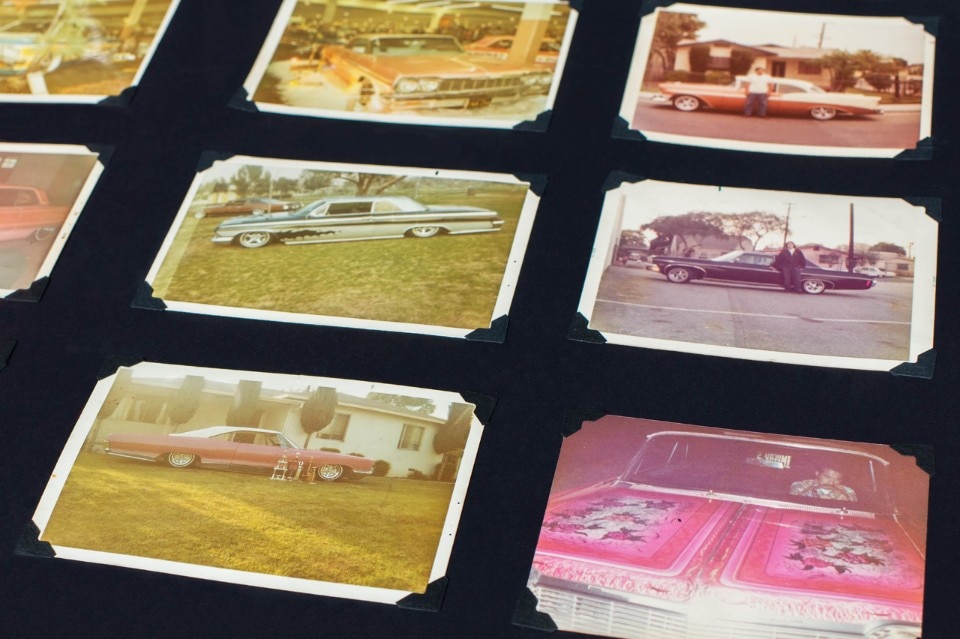
The lowriding community fully supported the making of Cruise Night. On June 12, 2021, the Los Angeles lowriding community is planning a large–scale celebration of the book release with a cruise night. There will be hundreds of lowrider cars at the event, including many of the people and the cars in the book. As you will see on the press release, Juan Ramirez, President of Just Memories CC and co-founder of the Los Angeles Lowrider Community said: "Kristin Bedford appreciates the sensitivity of our culture and Cruise Night is an amazing representation of lowriding. We are always being stereotyped but by riding with us she understands what we are really about and what we do. She has earned the respect of the lowrider community by not just making a book but by living the life with us. We will always be thankful that she’s one of the very few that got it right. Like the saying goes, “one rides, we all ride” and she’s riding along with us."
Here is a quote by one of the most famous lowriders in the world, Oscar Ruelas, co-founder of Dukes Car Club: "I have been lowriding for over 50 years. I have never met a photographer as sincere as Kristin Bedford. She gets a lot of respect from car clubs and lowriders all over, and that means a lot in our Chicano culture. I don’t think anybody has given us the credit and taken the time to understand our history like she has. We are not going to talk to just anybody but we knew we could trust her and she would listen. With her book, she is doing something good for the lowrider community."
When you have questions about if something is being appropriated, celebrated, explored or anything else, it is best to ask the people in the photos. They are the experts.
Many of your subjects are women. Do you think that, at least in part, the space they have given you in their lives stems from the fact that they recognize that you are, like them, a woman who approaches a "theme" generally considered to be of male pertinence?
For my entire career I have considered myself a “photographer”. During this project I realized for the first time that I was a “woman photographer”. When I saw the reverent, quiet and natural photos of women lowriders I made, I discerned that it was a woman connecting with other women who made them. I also reflected on why I had not seen images like this before and it became clear to me that the visual narrative of lowriding, and automotive cultures of all types, has been entirely shaped by men. The male-dominated imagery usually portrays women as sexual accessories who pose in bathing suits or lingerie alongside a car. Maybe it took a woman photographer to break through this mold and offer a new story.
The culture of lowriding has a long history and in your work, albeit long–term, you have been able to tell only the most contemporary aspects of it (although rooted in a well codified tradition). How have you seen the urban landscape, the natural environment of this community, change in these years? And, in the dichotomous logic strained between integration and gentrification, how has the relationship of lowriders with the city changed?
The relationship of lowriding to its landscape did not drastically change over the five years of making this work. One notable event was the demolition of the Sixth Street Bridge in January 2016. The bridge had historic significance in the lowriding community for decades. It was the bridge that connected the neighborhoods the lowriders lived in to the urbaine downtown Los Angeles. Crossing over it held a lot of significance politically, culturally and personally. There was a real sense of loss when it was torn down.
Like many other communities linked by a passion rooted in the past, that of the lowriders has a lot to do with the preservation of identities and values, in this case both ethical and aesthetic, for which they often have to fight. Do you think they will be able to keep their culture alive and intact at a time of such extreme social fluidity, on the one hand, but which on the other hand has to reckon, in the United States as in many other places in the world, with the always relevant issue of ethnic discrimination? And, if so, how?
There are tens of thousands of lowriders in Los Angeles County alone. This does not even take into consideration the large numbers in the rest of California and the American Southwest. This is an epic movement. There is no chance this culture will diminish. For the last seventy years lowriding has been prolific in Los Angeles and it only continues to grow.


